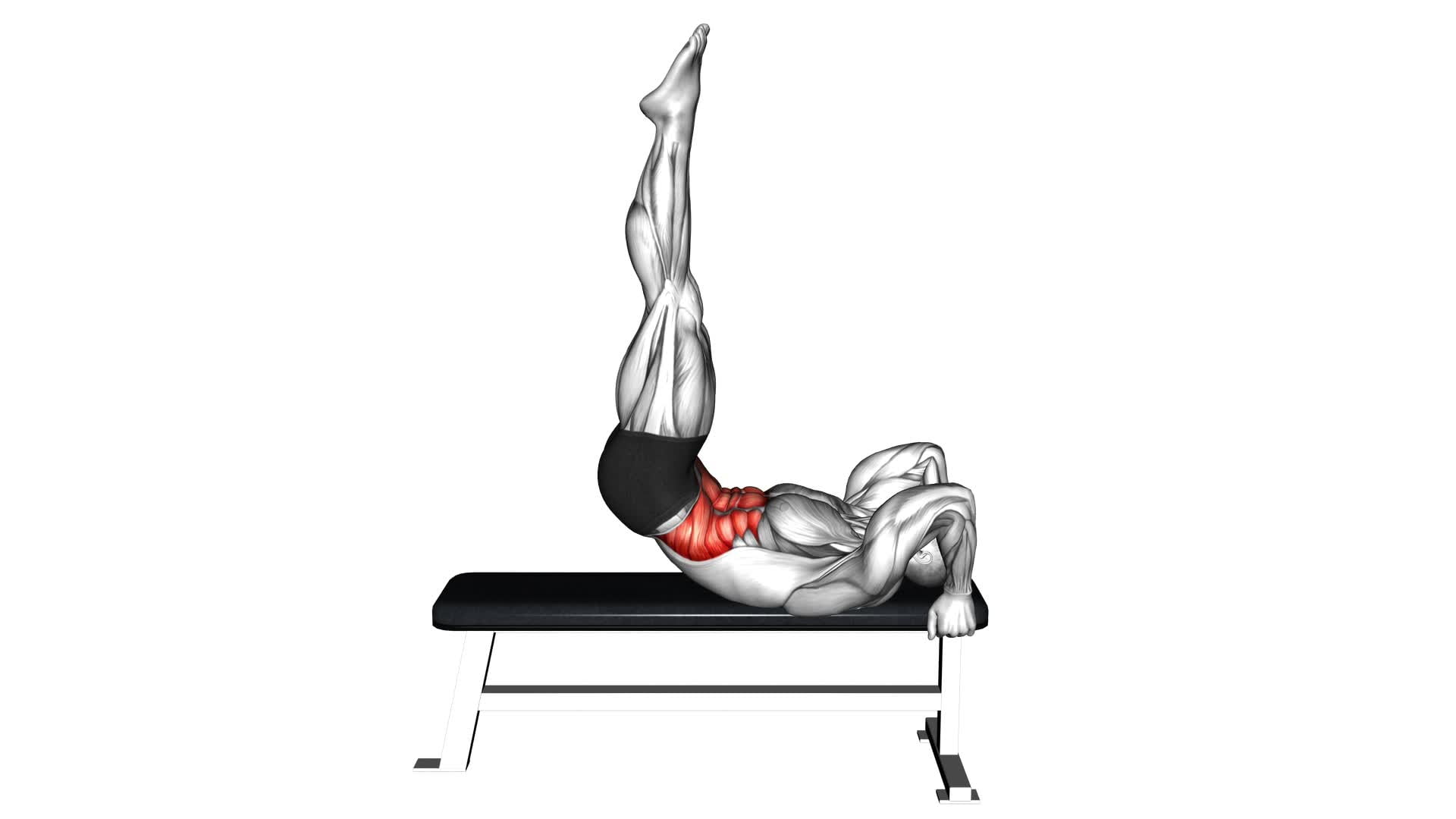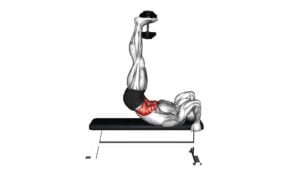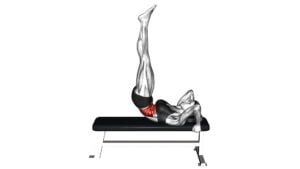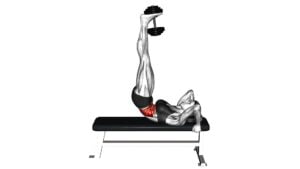Lying Flat Hip Raise (male) – Video Exercise Guide & Tips

Are you looking to strengthen your hip muscles and improve your overall fitness? Look no further than the lying flat hip raise. This exercise targets your hips and glutes, helping to tone and tighten those areas.
Watch This Exercise Video
In this video exercise guide, we will show you the proper form and technique, variations and modifications, as well as common mistakes to avoid.
Maximize your results with these helpful tips and get ready to feel the burn!
Key Takeaways
- Lying flat hip raise targets multiple muscles in the lower body, including the glutes, hamstrings, and lower back muscles.
- Proper form and technique are important for this exercise, such as lifting from the hips and avoiding arching the back or straining the neck.
- Variations and modifications can be made to increase intensity, such as incorporating resistance bands or stability balls.
- Common mistakes to avoid include relying on momentum, arching the back excessively, and neglecting proper breathing technique.
Benefits of Lying Flat Hip Raise
What are the benefits of performing the lying flat hip raise exercise?
The lying flat hip raise is an effective exercise that targets multiple muscles in your lower body, making it a great addition to your workout routine. When you perform this exercise, you engage your glutes, hamstrings, and lower back muscles. By targeting these muscles, the lying flat hip raise helps to strengthen and tone your lower body, improving your overall stability and balance.
Incorporating the lying flat hip raise into your workout routine can have several benefits. Firstly, it helps to build a stronger and more defined gluteus maximus, which is the largest muscle in your buttocks. This not only enhances the appearance of your backside but also improves your athletic performance, as a strong gluteus maximus is essential for activities like running, jumping, and lifting.
Additionally, the lying flat hip raise targets your hamstrings, which are located at the back of your thighs. Strengthening your hamstrings not only improves your athletic performance but also helps to prevent injuries, as strong hamstrings provide stability and support to your knees.
To incorporate the lying flat hip raise into your workout routine, start by lying flat on your back with your knees bent and feet flat on the ground. Lift your hips off the ground, squeezing your glutes at the top of the movement, and then slowly lower back down. Aim for 3 sets of 12-15 repetitions, gradually increasing the intensity as you get stronger.
Proper Form and Technique
To perform the lying flat hip raise exercise correctly, position yourself on your back with your knees bent and feet flat on the ground. Here are some key points to keep in mind for proper form and technique:
- Common misconceptions:
- It's important to note that the lift should come from your hips, not your lower back. Avoid arching your back or straining your neck during the exercise.
- Another common misconception is that lifting your hips too high will yield better results. However, it's more effective to focus on engaging your glutes and maintaining a controlled range of motion.
- Muscle activation:
- The lying flat hip raise primarily targets your glutes, but it also engages your hamstrings and core muscles.
- To maximize muscle activation, squeeze your glutes at the top of the movement and maintain tension throughout the exercise.
By following these guidelines, you can ensure proper form and technique during the lying flat hip raise exercise.
Now, let's explore some variations and modifications to keep your workouts challenging and exciting.
Variations and Modifications
Try incorporating different props, such as resistance bands or stability balls, to add variety and intensity to your lying flat hip raise workout. By using different equipment options, you can challenge your muscles in new ways and keep your routine fresh.
One option is to add resistance bands around your thighs or ankles to increase the resistance and target your glutes and hamstrings even more. The bands provide a constant tension throughout the movement, making it more challenging.
Another variation is to use a stability ball. Place your feet on top of the ball instead of the floor, and perform the hip raise movement. This adds instability, forcing your core muscles to work harder to maintain balance. It also puts more emphasis on your hip flexors and lower abs.
For advanced variations, you can try performing the hip raise on a decline bench or using a weighted barbell across your hips. These modifications increase the difficulty level and engage more muscles. Remember to start with lighter weights and gradually increase as you build strength and stability.
Experiment with these different options to keep your lying flat hip raise workout engaging and effective.
Common Mistakes to Avoid
To maximize your results and prevent potential injuries, make sure to avoid these common mistakes when performing the lying flat hip raise exercise:
- Using momentum: One of the most common mistakes is relying on momentum to lift your hips instead of engaging your core muscles. This not only reduces the effectiveness of the exercise but also puts unnecessary strain on your lower back. Focus on using your core muscles to lift your hips off the ground.
- Arching your back: Another mistake is arching your back excessively during the movement. This not only takes the focus away from your hip muscles but also puts strain on your spine. To maintain proper form, keep your back flat on the ground throughout the exercise.
- Neglecting proper breathing: Breathing plays a crucial role in any exercise, and the lying flat hip raise is no exception. Many people forget to breathe properly, which can lead to tension and decreased performance. Remember to exhale as you lift your hips off the ground and inhale as you lower them back down.
- Lifting your legs too high: While it may be tempting to lift your legs as high as possible, doing so can strain your hip flexors and lower back. Aim to bring your hips in line with your knees for optimal muscle engagement and to avoid excessive strain.
Tips for Maximizing Results
To maximize your results with the lying flat hip raise exercise, follow these tips.
First, consider increasing the intensity of your workout. One way to do this is by adding resistance training. Incorporating resistance bands or weights can help challenge your muscles and promote muscle growth. Place a resistance band around your thighs or hold a dumbbell between your legs while performing the hip raise to make the exercise more challenging.
Another tip is to focus on proper form and technique. Engage your core muscles throughout the entire movement and avoid using momentum. By maintaining control and performing the exercise correctly, you can target the muscles in your hips, glutes, and lower abdomen more effectively.
Additionally, make sure to breathe properly during the exercise. Inhale as you lower your hips down and exhale as you lift them up. This will help you maintain a steady rhythm and optimize your performance.
Lastly, don't forget to listen to your body. Start with a weight or resistance level that's challenging but manageable for you. Gradually increase the intensity as you become stronger and more comfortable with the exercise.
Frequently Asked Questions
How Many Calories Does the Lying Flat Hip Raise Exercise Burn?
The lying flat hip raise exercise can be a great addition to your workout routine. It targets your glutes, hamstrings, and core muscles.
While it's an effective exercise for strengthening and toning these areas, it may not burn a significant number of calories on its own. However, when combined with a well-rounded exercise program and a healthy diet, it can contribute to overall calorie burn and weight loss.
Remember to maintain proper form for maximum benefits.
Can Lying Flat Hip Raise Help in Reducing Lower Back Pain?
The lying flat hip raise technique can be beneficial in reducing lower back pain. By engaging your core and glutes, this exercise helps to strengthen the muscles that support your lower back, improving stability and reducing discomfort.
Additionally, the lying flat hip raise can help improve posture and increase flexibility in the hips and lower back.
Regularly incorporating this exercise into your routine may contribute to a reduction in lower back pain over time.
Is It Safe to Perform Lying Flat Hip Raise During Pregnancy?
During pregnancy, it's important to prioritize your safety and the well-being of your baby.
While the lying flat hip raise exercise may be beneficial for some individuals, it's generally not recommended during pregnancy due to the strain it places on the lower back and abdominal muscles.
However, there are plenty of alternative exercises that can help maintain pregnancy fitness, such as pelvic tilts, squats, and modified planks.
Consult with your healthcare provider for personalized guidance.
How Often Should I Perform Lying Flat Hip Raise to See Noticeable Results?
To see noticeable results in improving muscle strength, it's recommended that you perform lying flat hip raises regularly. While the frequency may vary depending on your fitness level and goals, a good starting point is to aim for 2-3 times per week.
However, it's important to note that there are variations of lying flat hip raises that target different muscle groups. Incorporating these variations into your routine can help maximize your results.
Can Lying Flat Hip Raise Help in Improving Posture?
Lying flat hip raise can indeed help improve your posture. By engaging your core, this exercise strengthens the muscles in your lower back, glutes, and hips, which are all essential for maintaining proper posture.
Beginners can start with basic variations, gradually progressing to more advanced options as they build strength. Remember to focus on proper form and engage your core throughout the exercise to maximize its benefits for your posture.
Conclusion
In conclusion, the lying flat hip raise is a highly effective exercise for targeting the muscles in the hips and glutes. By maintaining proper form and technique, individuals can maximize their results and avoid common mistakes.
Additionally, variations and modifications can be made to cater to individual fitness levels. Incorporating this exercise into your routine can lead to strengthened hip muscles, improved stability, and enhanced overall fitness.

Author
Years ago, the spark of my life’s passion ignited in my mind the moment I stepped into the local gym for the first time. The inaugural bead of perspiration, the initial endeavor, the very first surge of endorphins, and a sense of pride that washed over me post-workout marked the beginning of my deep-seated interest in strength sports, fitness, and sports nutrition. This very curiosity blossomed rapidly into a profound fascination, propelling me to earn a Master’s degree in Physical Education from the Academy of Physical Education in Krakow, followed by a Sports Manager diploma from the Jagiellonian University. My journey of growth led me to gain more specialized qualifications, such as being a certified personal trainer with a focus on sports dietetics, a lifeguard, and an instructor for wellness and corrective gymnastics. Theoretical knowledge paired seamlessly with practical experience, reinforcing my belief that the transformation of individuals under my guidance was also a reflection of my personal growth. This belief holds true even today. Each day, I strive to push the boundaries and explore new realms. These realms gently elevate me to greater heights. The unique combination of passion for my field and the continuous quest for growth fuels my drive to break new ground.







